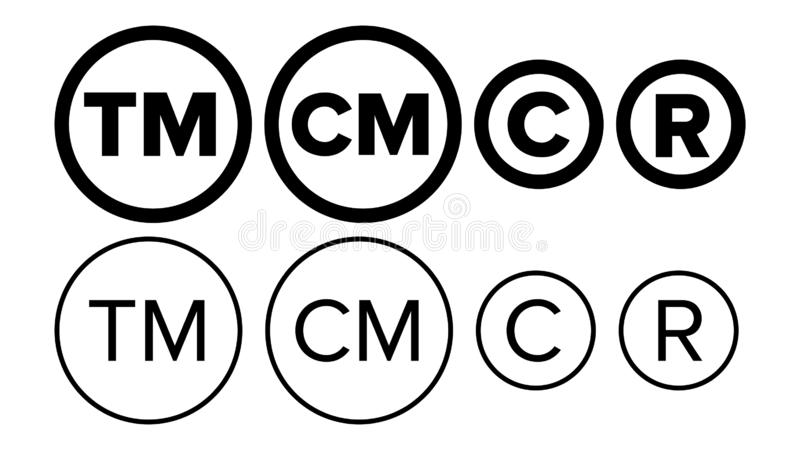MODULE 3 Part 3 Bank Reconciliation PDF Deposit Account Banks
Contents:


If you don’t ensure the business and bank are on the same page, tiny mistakes can snowball into huge problems. Reconciling bank statements typically happens at the end of each month when your financial institution sends over your statement. No matter how you do bank reconciliation, you’ll come across mystery transactions from time to time. There will be amounts that appear in one set of records but not the other.
- Instead, record them on the bank reconciliation, as these are timing differences that should be reversed during next month’s reconciliation.
- A failure to record transactions affecting your bank account would result in you not knowing how much funds you had available.
- A bank reconciliation statement is produced after comparing the cash balance on a balance sheet to the corresponding balance on the bank statement.
- The bank is correct most of the time, but will occasionally make a mistake.
- The heading should include the company’s name, bank name, bank account number, type of bank account, the period covered by the reconciliation and the date the reconciliation was prepared.
- If you commonly make deposits into your account, you’ll want to compare your bank account deposit totals to those listed in your general ledger.
You can earn our Bank Reconciliation Certificate of Achievement when you join PRO Plus. To help you master this topic and earn your certificate, you will also receive lifetime access to our premium bank reconciliation materials. These include our visual tutorial, flashcards, cheat sheet, quick tests, quick test with coaching, and more. Maintain a track of the company’saccounts payable and receivable.
How Often Should a Business Conduct a Bank Reconciliation?
To help you understand reconciling items better, the following items include examples of different kinds of reconciling items. Outstanding checks.Outstanding checks are checks that have been written but haven’t yet cleared the bank. Spot fraudulent transactions and suspicious payments early. When one of the most tiring tasks, preparing Bank Reconciliation Statement, is brought down to one step, imagine how Gofrugal can automate other processes in your business. Actually, rather than just imagining, experience the FREE trial of Gofrugal ERP and other apps for a full month.
Those two balances are rarely equal owing to differences in timing in recording transactions. Additionally, the bank reconciliation can highlight any errors recorded in either the company’s accounts or in the bank statements. This topic explains where and how a bank reconciliation is prepared in your MYOB software. Preparing a bank reconciliation statement helps you know if customer cheques have bounced, or if the cheques issued were stolen or altered, or even cashed without your knowledge.
Meta preparing to lay off thousands more staff tomorrow, months after letting go of 11,000 – Daily Mail
Meta preparing to lay off thousands more staff tomorrow, months after letting go of 11,000.
Posted: Tue, 14 Mar 2023 07:00:00 GMT [source]
These all https://1investing.in/ed up to $5,000 and were not recorded on the balance sheet. Consequently, the company’s general ledger cash account and its balance sheet will reflect the reconciled, adjusted, correct and true cash balance. The reconciled and adjusted cash book balance is reported in a company’s financial statements.
A Step-by-Step Guide To Do Bank Reconciliation
These items are typically service fees, overdraft fees, and interest income. You’ll need to account for these fees in your G/L in order to complete the reconciliation process. If a depositor has a positive bank balance, the bank statement shows the deposit as a credit balance because it has a liability to pay it back to the client. You should also review any deposits in transit at the end of the prior month.
For instance, a company will have one Cash account for its main checking account, a second Cash account for its payroll checking account, and so on. For simplicity, our examples and discussion assume that the company has only one checking account with one general ledger account entitled Cash. For a different perspective and chance to practice simple bank reconciliations, click Banking Practice. The illustration below shows a bank reconciliation statement as having two sections.
Berri reportedly preparing to visit Saudi Arabia – Naharnet
Berri reportedly preparing to visit Saudi Arabia.
Posted: Sat, 11 Mar 2023 08:00:00 GMT [source]
A bank reconciliation statement is prepared by a depositor to overcome differences in the balances of the cash book and bank statement. Notice that there are no journal entries posted for the bank statement adjustments because those are only used in the reconciliation process to calculate at the “correct” adjusted cash balance. This bank statement is an example of the transactions that occurred during the month. In the Deposit and credits section, you see the deposits made into the account and a CM which is a collection of a note and interest the bank has paid to your account. Most companies use checking accounts to handle their cash transactions.
Overview of Bank Reconciliation
A daily reconciliation may also be necessary if you suspect that someone is fraudulently withdrawing cash from the bank account. Book balance is an accounting record of a company’s cash balance reflecting all transactions and must be reconciled with the bank account balance. Bank reconciliation statements compare transactions from financial records to those on a bank statement. Where there are discrepancies, companies are able to identify the source of errors and correct them. A bank reconciliation statement summarizes banking and business activity, reconciling an entity’s bank account with its financial records.
If your bank account, credit card statements, and your bookkeeping don’t match up, you could end up spending money you don’t really have—or holding on to the money you could be investing in your business. This can also help you catch any bank service fees or interest income making sure your company’s cash balance is accurate. It is better to adjust the cash book balance against the items in the company’s passbook before reconciliation. This way, cheques issued but not presented, cheques deposited but not collected yet, and other items that occur as a result of an error can be adjusted before a bank reconciliation statement is worked upon. Ideally speaking, companies ought to reconcile their bank statements every month or even as soon as these bank statements are produced in order to maximise their ability to spot errors early.
Learn how a FloQast partnership will further enhance the value you provide to your clients. Emma’s 70-person geographically distributed accounting team improved internal controls and streamlined the audit thanks to FloQast. Learn how FloQast helped Zoom overall its month-end Close process and offer new visibility for leadership following a successful IPO.
This summary details the withdrawals, deposits, and other relevant activities that may impact a bank account within a specific timeline. When preparing a bank reconciliation, bank credits are a. The Reconcile Accounts window then appears where you can perform the bank reconciliation process for any cash account in the general ledger. The following screenshots and reference table show step-by-step instructions on how to prepare a bank reconciliation for the Cheque Account using the Reconcile Accounts window. Note that each step is assigned a reference number to help you identify the appropriate field or icon in the screenshots. This is of particular importance if a company is operating with minimal cash reserves, and needs to ensure that its recorded cash balance is correct.

Record button Check that the details entered into the Bank and Deposit Adjustments window are correct. Then, click the Record button to journalise the entries and post the transactions to the applicable accounts. If not, check your work again and confirm that you have not made errors when preparing the bank reconciliation and have correctly entered all cash transactions into your MYOB software.
To prepare a bank reconciliation, gather your bank statement and a list of all of your recent transactions. Compare your debits, or withdrawals from your bank account, and credits, or deposits you made into your account, to ensure that the transactions appear in both your records and on your bank statement. If you find an error on the bank’s part, contact them as soon as possible to let them know about the discrepancy. When your company receives the bank statement, you should print a report listing all of the checks written and deposits made during the month.
That list should include the check number, the dollar amount and the payee. Small business owners may find that sufficient funds from the previous month are not enough. Mismatched end balances could lead to audits and heavy fines. Outstanding checks happen when they are written at the end of the month and the bank doesn’t catch the transaction on time for the statement. Schedule the time to do it every week or even every day.
On that note, bank reconciliation exercises are also a practical approach for businesses to formulate improved corporate governance policies and internal controls over cash payments and receipts. Thus, this practice is constantly a non-negotiable for the Chief Financial Officer’s office, given its role in governing the accuracy of an entity’s accounting records. To reconcile a bank statement cash balance, add back deposits in transit and deduct uncleared checks. Next, add interest to the cash balance in a company’s books and subtract bank fees and rejected checks. Finally, add or deduct any other items or errors to match the bank and book cash balances. While some reconciling items necessitate an adjustment to your book balance with journal entries, deposits in transit and outstanding checks do not.
It is also useful to complete a bank reconciliation to see if any customer checks have bounced, or if any checks you issued were altered or even stolen and cashed without your knowledge. Thus, fraud detection is a key reason for completing a bank reconciliation. When there is an ongoing search for fraudulent transactions, it may be necessary to reconcile a bank account on a daily basis, in order to obtain early warning of a problem. A bank reconciliation statement is a summary of banking and business activity that reconciles an entity’s bank account with its financial records.
JAIIB Syllabus 2023, Revised Syllabus by IIBF – Bankersadda
JAIIB Syllabus 2023, Revised Syllabus by IIBF.
Posted: Mon, 27 Feb 2023 08:00:00 GMT [source]
This is done by accessing the updates in the payroll accounting records through the bank’s website.Preparing a BRS frequentlyis necessary if you suspect any fraudulent activities happening. We can help you prepare a BRS, identify and help avoid fraudulent activities. Since these items are generally reported to the company before the bank statement date, they seldom appear on a reconciliation. Examples include deposited checks returned for non-sufficient funds or notes collected on the depositor’s behalf. If you identify an error during the reconciliation process, it is not always necessary that the error is at your end. Banks also make errors and if you are unable to figure out the mistake at your end, get in touch with the bank.
It’s also used by auditors to conduct a company’s year-end audit. This is the statement you need to begin the bank reconciliation process. This is a check or money transfer you’ve issued and recorded on your books which is still uncleared. The balance recorded in your books and the balance in your bank account will rarely ever be exactly the same, even if you keep meticulous books. Hopefully you never lose any sleep worrying about fraud—but reconciling bank statements is one way you can make sure it isn’t happening.

Upon looking at the bank reconciliation statement, they found that they didn’t record the account’s $25 monthly service fee. They also find that the check for $397 was mistakenly cashed for $367 instead. They can now take steps to rectify the errors and balance their statements. Cross-checking your bank statements with your balance sheet at the end of every month during the closing process is necessary. It ensures that errors do not pile up and you identify any discrepancies at the earliest. Do note that if your business has a huge transaction volume, doing bank reconciliations more frequently would be a better idea.




